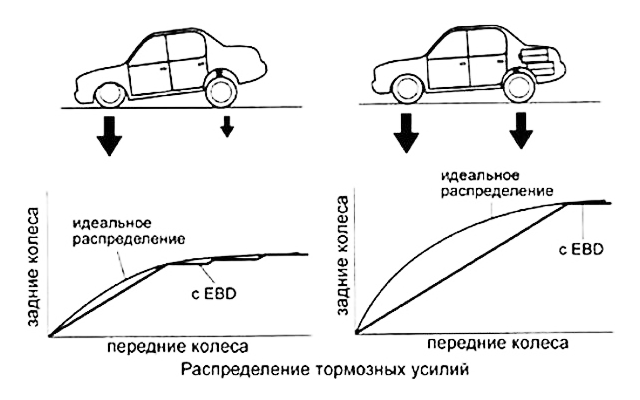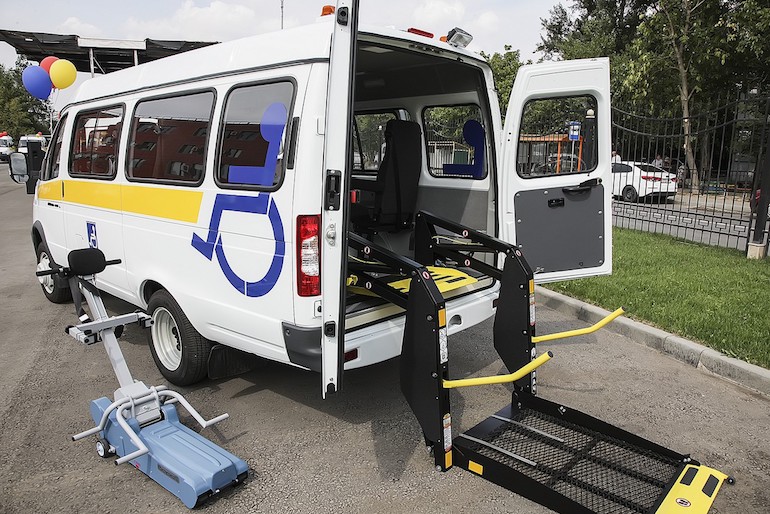
what is it in a car? Electronic brake force distribution
When looking through the configurations and technical specifications for a particular model, we often come across many different abbreviations, the true meaning of which we have no idea. For example, how can a non-English person know that EGR is an exhaust gas recirculation system? But almost all drivers know what ABS is - it is one of the active security systems, anti-lock brakes.
Together with ABS, another active safety system is used - EBD, which stands for electronic brake force distribution system. Our today's article on Vodi.su will be devoted to the consideration of this system.

Why is brake force distribution necessary?
Let's start with the fact that for a long time, drivers did without all this active safety. However, cars are becoming more common, the criteria for issuing driver's licenses are becoming less stringent, and the cars themselves are constantly being improved.
What happens if you suddenly press the brake pedal while driving at high speed? In theory, the car should stop abruptly. In fact, the car will not be able to stop instantly, there will be a certain length of braking distance due to the elemental force of inertia. If you brake hard on an icy road, then this path will be three times longer. In addition, the front wheels are blocked and it is not possible to change the direction of movement during emergency braking.
The ABS system is designed to eliminate this problem. When it is turned on, you feel the vibrations of the brake pedal, while the wheels do not lock, but scroll a little and the car maintains directional stability.
But ABS has some drawbacks:
- does not work at speeds below 10 km / h;
- on dry pavement, the braking distance becomes shorter, but not by much;
- not very effective on bad and dirt roads;
- not effective on uneven road surfaces.
That is, if, for example, you drive your right wheels into liquid mud, which is often near the curb, and start braking with ABS, the car may skid. Also, the system requires additional maintenance, since various sensors are responsible for its operation, which can become clogged and fail.
EBD cannot be called a separate system, it comes with anti-lock brakes. Thanks to the sensors and the information coming from them, the electronic control unit has the ability to distribute the braking force to each of the wheels. Thanks to this fact, the chances of drifting into corners are minimized, the car retains its trajectory even when braking on uneven road surfaces.

Components and scheme of work
The system is based on ABS components:
- speed sensors for each wheel;
- brake system valves;
- Control block.
When you press the brake, the sensors send information about the speed of rotation of the wheels to the central unit. If the system determines that the front axle is under more load than the rear, it applies momentum to the valves in the brake system, causing the pads to slightly loosen their grip and the front wheels to spin a little to stabilize the load.
If you brake on a turn, then there is a difference in the load between the left and right wheels. Accordingly, the less involved wheels sort out part of the load on themselves, and those that face the direction of the turn are slightly braked. In addition, the driver retains control over the steering and can change the trajectory of movement.
It is worth noting that EBD is not completely error-proof. So, if you are driving on a track completely uncleaned of snow and ice, there may be moments when the right wheels drive on ice and the left wheels on asphalt. The software will not be able to navigate in this situation, which will be tantamount to releasing the brake pedal.

Thus, the driver needs to remain vigilant throughout the route. According to statistics, the use of such systems leads to some psychological moments: drivers who are completely confident in their safety lose their vigilance, as a result of which they get into an accident.
From this we conclude: you need to constantly monitor the road and follow the rules of the road, regardless of whether active safety systems are installed on your car or not. Only in this case it is possible to minimize the number of dangerous situations on the roadway.
Loading…
